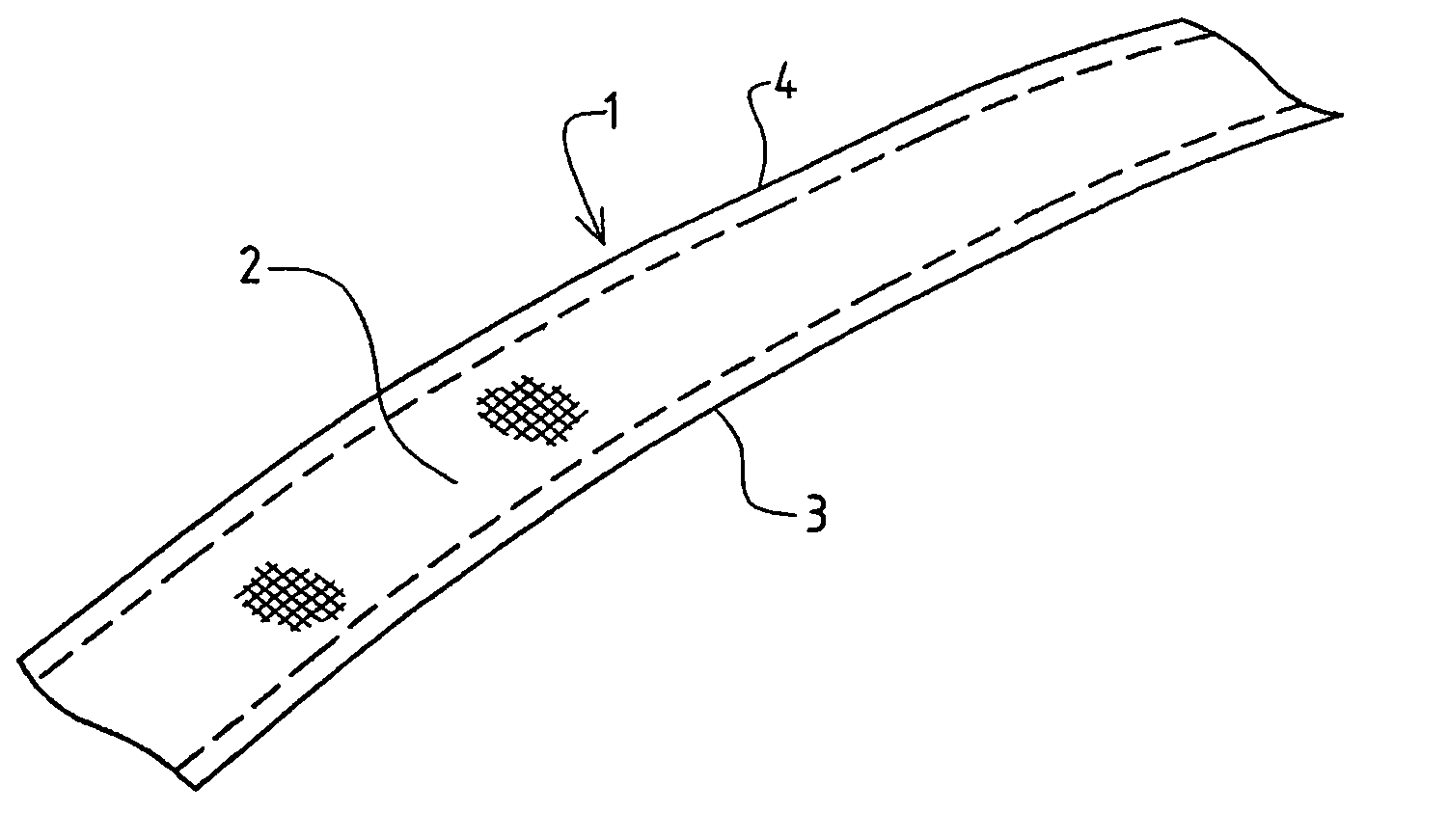Webbing belt
a belt and webbing technology, applied in the field of webbing belts, can solve the problems of high cost and time-consuming, hard belt edges, and clearly undesirable effects, and achieve the effects of reducing the cost of technique, and improving safety
- Summary
- Abstract
- Description
- Claims
- Application Information
AI Technical Summary
Benefits of technology
Problems solved by technology
Method used
Image
Examples
Embodiment Construction
[0064]Referring initially to FIG. 1, a belt 1 is illustrated. The belt 1 is of a size suitable for use as a motor vehicle seat-belt, although it is to be understood that the belt may be used for various different purposes, for example as an aircraft seat-belt or a belt forming part of a safety harness or the like. The belt 1 is of elongate form, thus having a longitudinal axis and a transverse axis. The belt is woven from one or more monofilament weft yarns, which extend transversely to the longitudinal axis of the belt, and, in this embodiment, a plurality of multifilament warp yarns which extend parallel with the longitudinal axis of the belt.
[0065]A central region 2 of the belt is formed using a conventional weaving technique, but the belt has two edge regions 3, 4 where a specific belt structure is provided, examples of which will now be described.
[0066]Referring to FIG. 2, a peripheral part of the central region 2 of the seat-belt is illustrated together with the edge region 3....
PUM
| Property | Measurement | Unit |
|---|---|---|
| Temperature | aaaaa | aaaaa |
| Temperature | aaaaa | aaaaa |
| Diameter | aaaaa | aaaaa |
Abstract
Description
Claims
Application Information
 Login to View More
Login to View More - R&D
- Intellectual Property
- Life Sciences
- Materials
- Tech Scout
- Unparalleled Data Quality
- Higher Quality Content
- 60% Fewer Hallucinations
Browse by: Latest US Patents, China's latest patents, Technical Efficacy Thesaurus, Application Domain, Technology Topic, Popular Technical Reports.
© 2025 PatSnap. All rights reserved.Legal|Privacy policy|Modern Slavery Act Transparency Statement|Sitemap|About US| Contact US: help@patsnap.com



